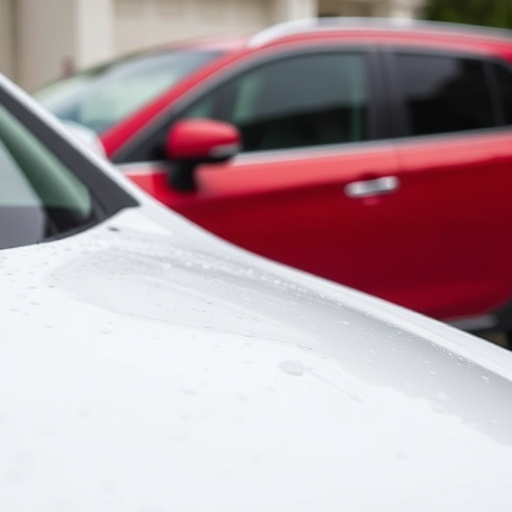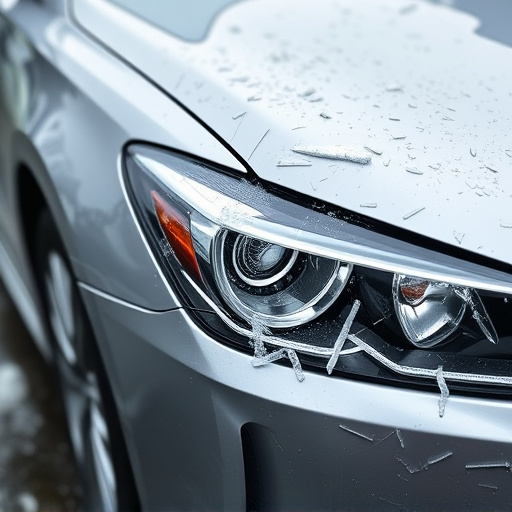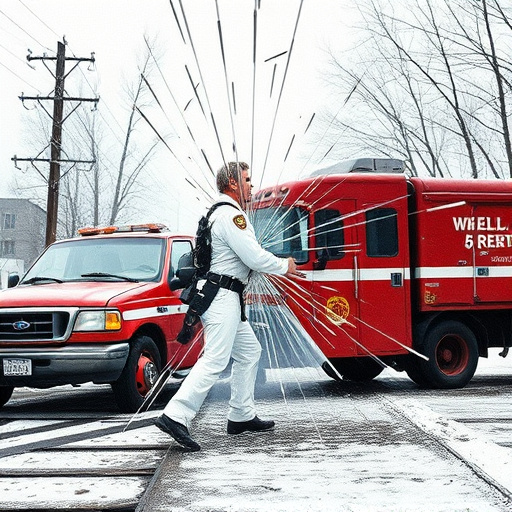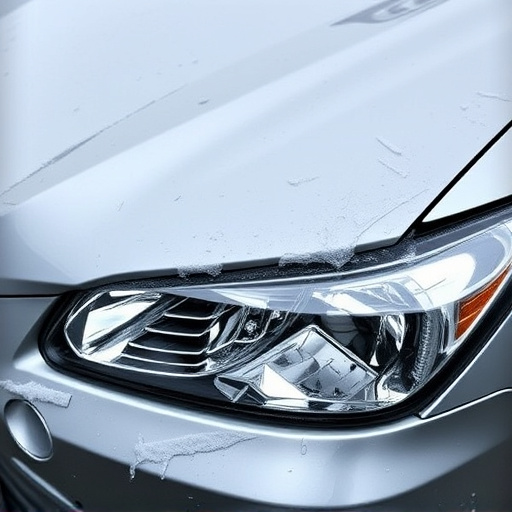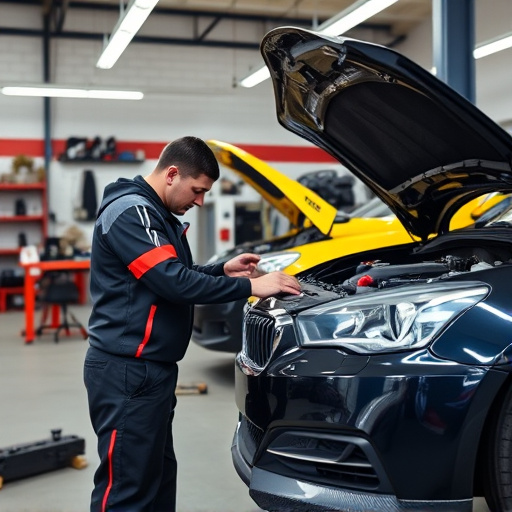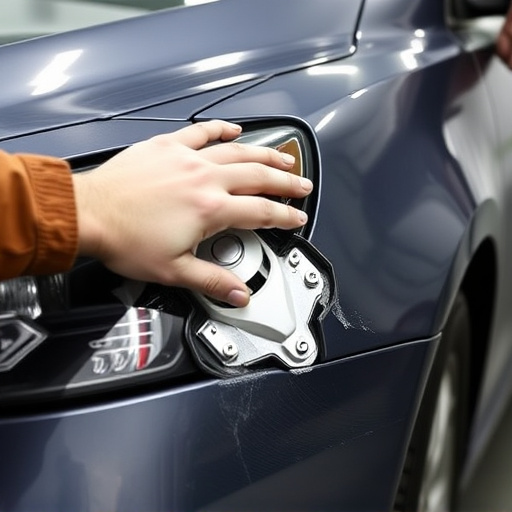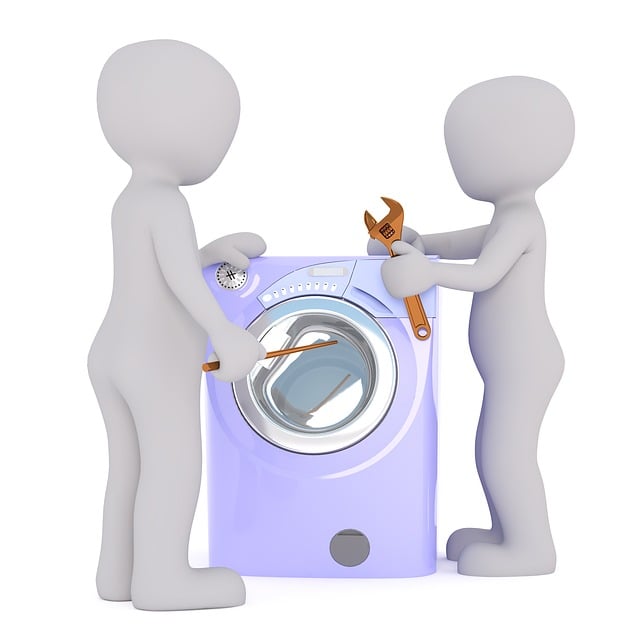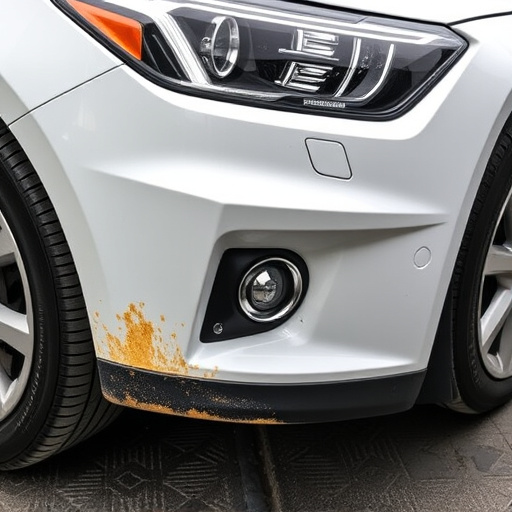A brake system collision check is a critical safety procedure that simulates extreme conditions to evaluate a vehicle's braking performance, focusing on wear and tear, fluid levels, and component functionality. After accidents or repairs, this process includes pressure checks, pad thickness evaluations, and rotor assessments in automotive body shops, ensuring vehicles meet safety standards before returning to the road. For luxury brands like Mercedes-Benz, accurate collision checks are vital for system reliability and safety beyond fender repairs. Adhering to legal requirements and industry standards is crucial for passenger safety, with non-compliance facing severe consequences. Regular, rigorous protocols identify worn or damaged brakes proactively, enhancing vehicle reliability and road safety while reducing costs.
In the realm of automotive safety, brake system collision checks play a pivotal role in preventing accidents and saving lives. This comprehensive article delves into the intricate world of managing complex brake system collision cases, exploring strategies that bridge the gap between legal requirements and technical precision. From understanding the definition and purpose of these checks to implementing advanced diagnostic tools and fostering collaboration among stakeholders, we unravel the intricacies of efficient collision check management, ensuring swift resolutions and enhanced safety standards.
- Understanding Brake System Collision Checks
- – Definition and purpose of brake system collision checks
- – Legal requirements and industry standards related to collision checks
Understanding Brake System Collision Checks

A brake system collision check is a critical safety measure designed to identify potential issues within a vehicle’s braking mechanism. This process involves simulating a collision scenario to assess how well the brakes perform, ensuring they can effectively slow down or stop the car under extreme conditions. It’s not just about checking for obvious damage; it also involves inspecting the brake components for wear and tear, fluid levels, and overall functionality.
In an automotive body shop, these checks are essential for maintaining the safety standards of cars undergoing repairs or maintenance, especially after accidents. The process includes a series of tests, such as checking brake fluid pressure, evaluating brake pad thickness, and assessing the condition of the rotors. By understanding the intricacies of these collision checks, auto painting and bodywork services professionals can better address any issues, ensuring vehicles are safe to hit the road again without compromising on performance or safety.
– Definition and purpose of brake system collision checks

The brake system collision check is a critical safety measure designed to identify and rectify potential issues within a vehicle’s braking mechanism after a collision or impact event. This meticulous process involves thoroughly examining various components, from the brake pads and rotors to the master cylinder and calipers, to ensure they function optimally and effectively. The primary purpose of these checks is to prevent catastrophic failures by addressing any damage or wear that could compromise the braking system’s integrity during subsequent drives.
For collision repair shops, especially those specializing in luxury brands like Mercedes-Benz repairs, accurate brake system collision checks are essential. These checks not only help in determining the extent of fender repairs but also ensure the safety and reliability of the vehicle’s most vital systems. By implementing rigorous protocols for these inspections, certified technicians can effectively communicate potential issues to car owners, facilitating informed decisions regarding repair or replacement.
– Legal requirements and industry standards related to collision checks

In the realm of automotive maintenance and safety, legal requirements and industry standards for brake system collision checks are paramount to ensure vehicle and passenger security. These rigorous protocols dictate how frequently such checks should be conducted, what components must be inspected, and which methodologies can be employed. Non-compliance not only carries significant legal repercussions but also undermines the overall reliability of the automotive industry. As a result, garages and workshops are expected to stay abreast of these evolving standards, adhering strictly to ensure the well-being of all road users.
Moreover, while tire services and car collision repair often take center stage in post-accident scenarios, brake system collision checks play a vital role in identifying potential issues before they escalate. This proactive approach not only saves costs for both vehicle owners and repair facilities but also prevents accidents by addressing brakes that may be worn or damaged, thereby contributing to the smoother operation of our roads and highways.
In managing complex brake system collision check cases, a thorough understanding of both legal mandates and technical intricacies is paramount. By adhering to industry standards and employing strategic approaches, such as comprehensive testing, data analysis, and continuous training, vehicle manufacturers and maintenance facilities can ensure the safety and reliability of brake systems. Regular and rigorous collision checks not only meet regulatory requirements but also contribute to reducing accidents and enhancing road safety.
